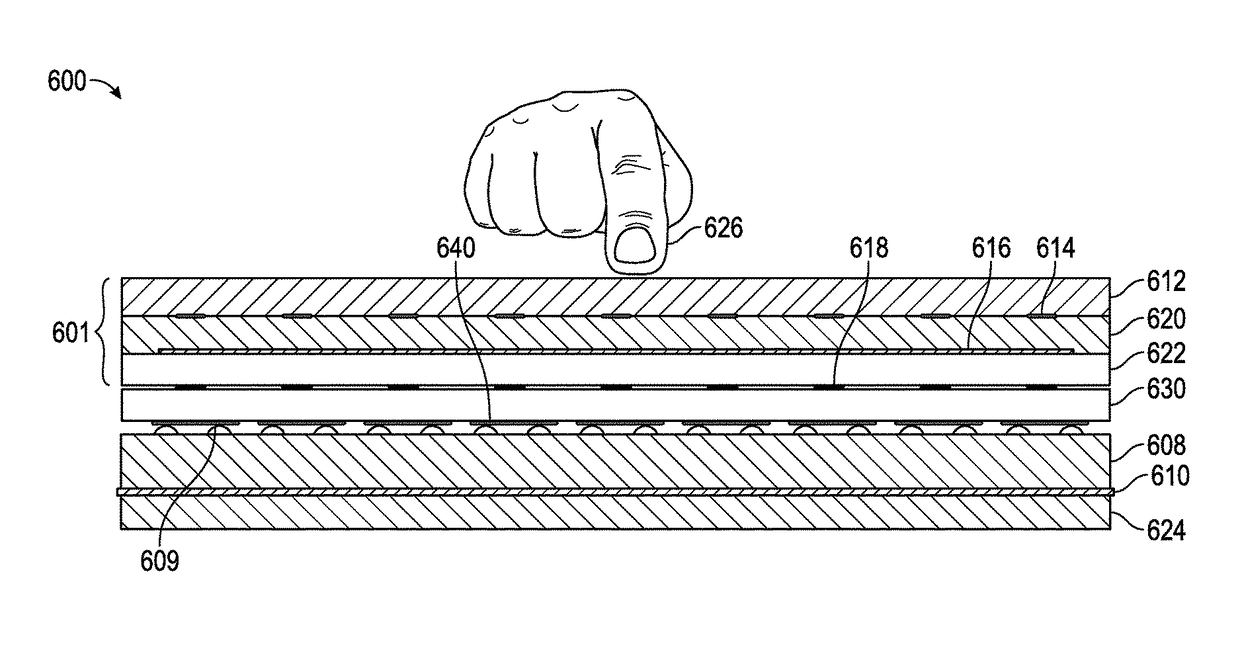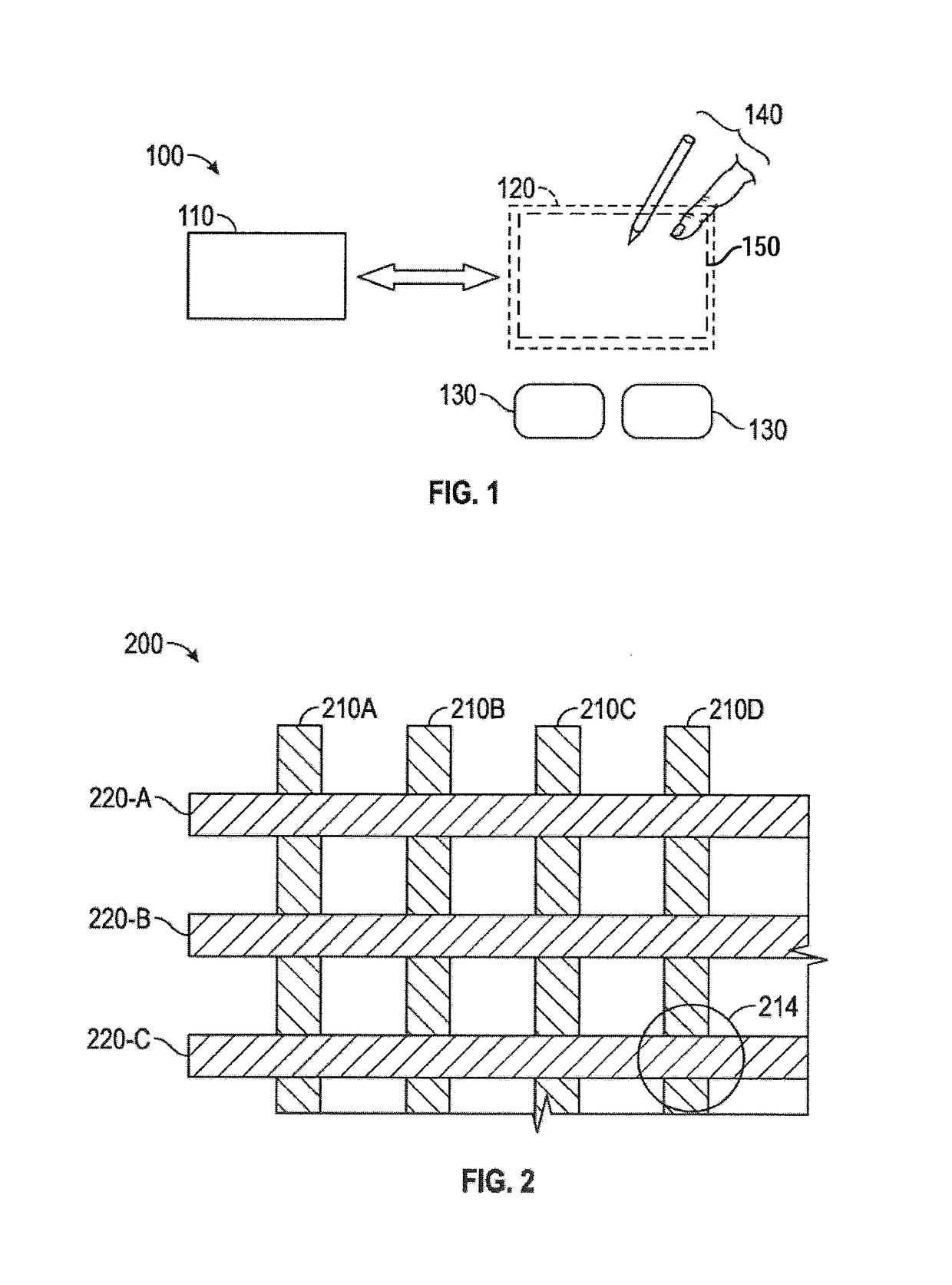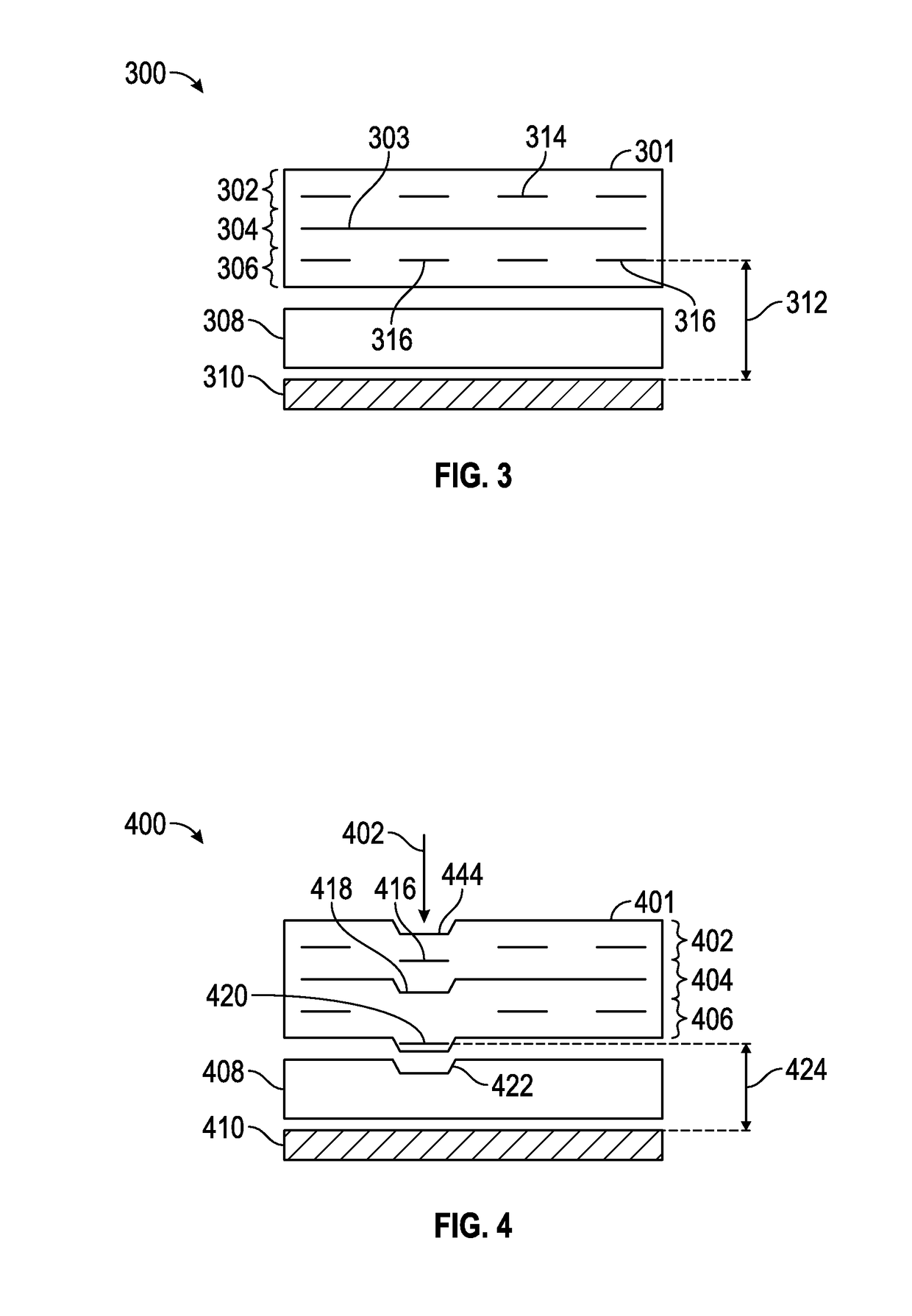Device and method for proximity sensing with force imaging
a technology of force imaging and proximity sensing, applied in the field of electronic devices, can solve the problems of increasing the cost and complexity of the presently known force enabled input device, and achieve the effects of enhancing the variable capacitance, facilitating the improvement of device usability, and improving user interface functionality
- Summary
- Abstract
- Description
- Claims
- Application Information
AI Technical Summary
Benefits of technology
Problems solved by technology
Method used
Image
Examples
Embodiment Construction
[0013]The following detailed description is merely exemplary in nature and is not intended to limit the invention or the application and uses of the invention. Furthermore, there is no intention to be bound by any expressed or implied theory presented in the preceding technical field, background, brief summary or the following detailed description.
[0014]Various embodiments of the present invention provide input devices and methods that facilitate simple construction, reduced cost, and enhanced force sensing capability resulting in improved usability. Device cost and complexity may be reduced by disposing three electrode arrays (touch receiver, force receiver, and common transmitter) on a single substrate or laminate. In response to applied pressure, the pliable electrode substrate deforms in the vicinity of the applied force, such that all three electrode arrays move without appreciable relative motion among the respective arrays. That is, the touch pixels and force pixels move in u...
PUM
 Login to View More
Login to View More Abstract
Description
Claims
Application Information
 Login to View More
Login to View More - R&D
- Intellectual Property
- Life Sciences
- Materials
- Tech Scout
- Unparalleled Data Quality
- Higher Quality Content
- 60% Fewer Hallucinations
Browse by: Latest US Patents, China's latest patents, Technical Efficacy Thesaurus, Application Domain, Technology Topic, Popular Technical Reports.
© 2025 PatSnap. All rights reserved.Legal|Privacy policy|Modern Slavery Act Transparency Statement|Sitemap|About US| Contact US: help@patsnap.com



